Complete Guide To Solar Pool Heater
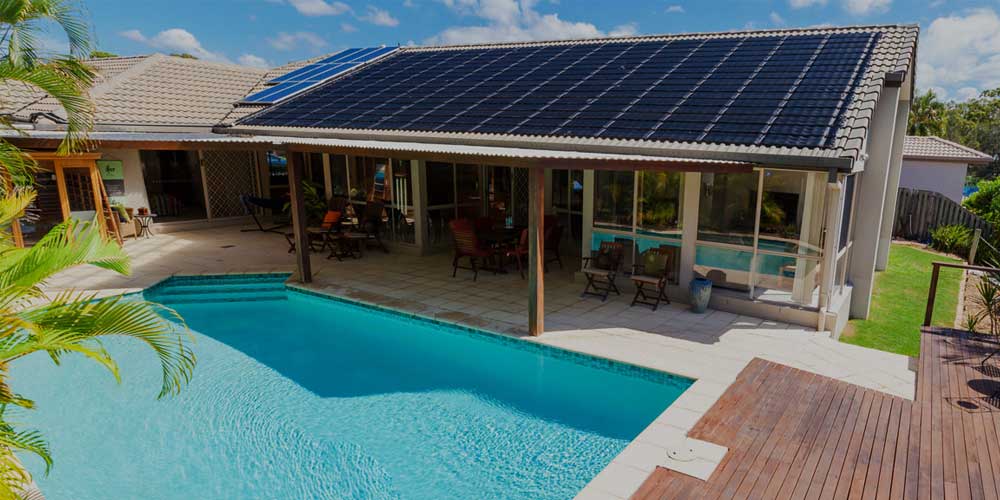
One of the most effective ways to reduce cost and understand competitive pricing in different types of pool heaters is by switching over to solar power pool heating systems, which double as environment-friendly alternative energy sources.
In order to choose the right kind of unit for your pool, you have to make sure that you opt for the perfect pool heating system model to suit the requirements of your pools the best. Therefore, various types of solar pool heaters are suitable for small and large pools, catering for their specific needs to suit your best interests.
Types Of Solar Pool Heaters
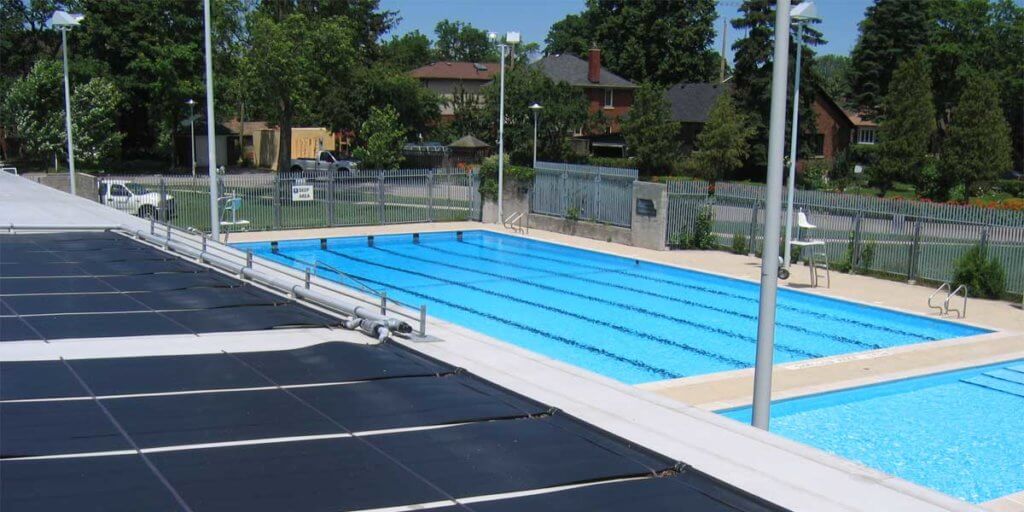
Imparting new knowledge about different types of solar pool heaters is indeed a good start to deciding on a new system. Like any other system, solar pool heaters also have various models, with a wide array of price ranges, to choose from. These variations depend on several things, such as type, location of your pool, and size.
Therefore, let’s discuss about the different types of solar pool heaters in detail:
1. Evacuated Tube Collectors
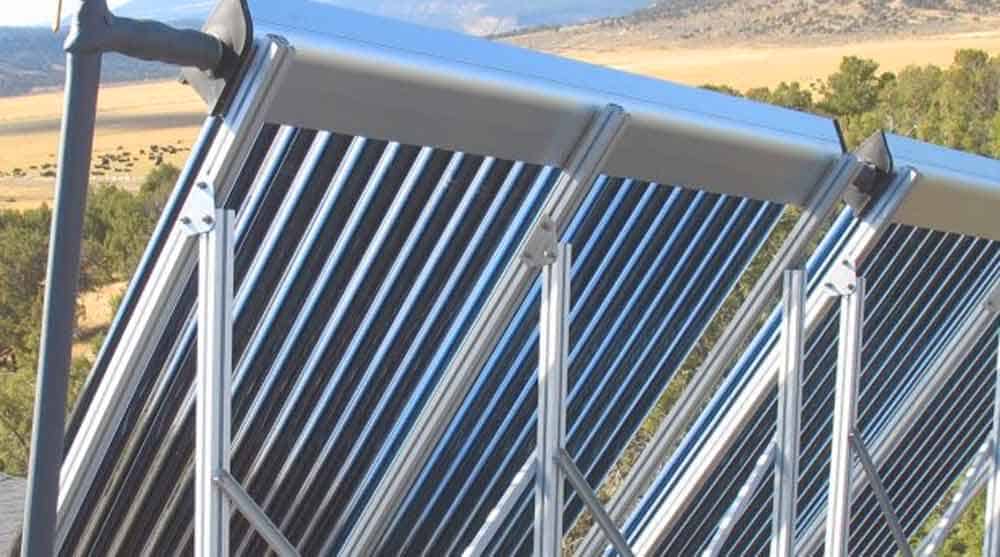
Evacuated Tube Collectors or ETC systems are considered one of the most expensive options in the market and are the perfect fits for large indoor pool applications.
This usually goes by a series of vacuum tubes absorbing the heat directly from sunlight, then transferred to a properly circulated antifreeze solution. Thus, this, in return, is transmitted to the pool water via a heat exchanger to do the job.
Let’s take a look at the pros and cons of ETC:
Pros
- Evacuated Tube Collectors are the most suitable for areas that usually experience temperatures below freezing degrees.
- They are also significantly more efficient than other solar pool heating systems.
Cons
- ETC arrangements are generally more complicated in terms of their design and installation procedures.
- These systems can cost up to more than $6,000 to work along with the needs and requirements of a large pool.
- ETC systems are heavier than many other models, and hence, they mostly require a permit from authorities before going ahead with roof installations.
2. Polymer Systems
Some of the excellent examples of polymer materials that make up the basic anatomy of several pool heaters are plastic, polystyrene, rubber, PVC, polyethylene, and polypropylene.
Polymer systems are available in both coil and mat configurations, as well as there are many variations designed specifically for small above-the-ground pools. However, there have been certain designs developed particularly to heat large in-ground pools.
Let’s focus on discussing the pros and cons of polymer systems:
Pros
- Most of the polymer systems are easier to build and install.
- There are many inexpensive options to choose from the plate.
- Additionally, several designs are made available for mounting on the ground nearby the pool.
Cons
- Unfortunately, there are quite a few models that are not suitable for temperatures below freezing and, therefore, require seasonal draining and cleaning.
- To add to that, some polymer system models are not ideal for large pools.
3. Flat Plate Collectors
Flat plate collectors usually consist of either aluminum or copper sheet painted in black, along with copper tubes carrying liquids across this plate to collect the heat directly from the sun.
Additionally, both glazed and unglazed units are widely available in the market, wherein glazed units are primarily installed in an insulated box, followed by a glass covering. These units are also commonly used for indoor pool heating. On the other hand, unglazed units are more suited to outdoor pool heating.
Some of the pros and cons of flat plate collectors include:
Pros
- Flat plate collectors are less expensive as compared to ETC systems.
- Glazed units can be used for indoor pools and below-freezing applications.
Cons
- Flat plate collector units are more suited to sunnier or warmer climates in general.
- Unglazed units are more susceptible to freezing.
4. Integral Collector Storage
Integral Collector Storage or ICS systems are almost similar in design and structure to flat plate collector systems. They are also known as “batch” heaters sometimes.
They generally combine collector tubes and hot water tanks. ICs heaters are also often referred to as “the most common homemade solar hot water heating devices since they can be easily constructed using large-diameter copper, plastic tubing, or an old copper water cylinder inside a wooden box.”
Pros and cons of ICS are as follows:
Pros
- They are easy to build and install.
- They are not complicated but reliable.
Cons
- These can freeze in excessive cold temperatures, which call for the requirement of seasonal draining.
- These heaters are very heavy and need proper roof structure support.
How Well Does A Solar Pool Heater Work?
The short answer is: extremely well. These solar pool heaters are extremely effective, and once they’re given the ideal conditions, they can thrive and perform to the best of their ability. Quantitatively, let’s see how we can achieve this.
How Much Warmer Will The Pool Be?
If you’re still skeptical about using solar as water heaters for any source of water, then you need to consider the statistics of practical applications of solar pool heaters. To ensure that they really work, there are some components that you need to keep in mind.
While they may be working, you need to also make sure if it’s enough for your needs. Using solar heating panels may get the job done for you if you only want your water to be slightly lukewarm and less cold, but for best results and actually warm water, you need to be using your solar heating panels with solar blankets over your pool.
What this essentially ensures is that you’re providing heat to your pool water with the help of your solar heating panels, and then you’re insulating that heat with the help of your solar pool cover or solar pool rings. Hence investing in a pool cover is a viable option if you’re thinking of installing solar heating panels into your pool as well.
While it largely depends on the geographical area you’re situated in, you can expect to see a range of rising pool temperatures if you’re thinking of installing solar heating panels.
There is not a simple singular indicator of how much warmer your water can be – it largely depends on the weather, surrounding temperatures, and many other factors that we’ll discuss in the next section.
However, a rough estimate of the rise in pool temperatures can start from 4.9 degrees Celsius and go all the way up to 18.1 degrees Celcius. As has already been mentioned, this difference in range can be due to a variety of measures that you can tweak in order for your pool to be the warmest temperature it can when it’s needed to be.
However, these numbers should not be your ideal expectations for your pool temperatures as well. Heating for your pool may also depend on the coverage that the solar heating panels provide to your pool.
Hence, it makes sense to run tests yourself and estimate the temperature in different weather conditions once you’ve installed your own solar heating panels, as this can give you a rough idea of rising temperatures that you can expect out of your pool.
Factors Affecting Solar Pool Heaters And Pool Temperatures
As we’ve continued to mention in the last topic, the rise in temperature for your pool owing to your solar heating panel will largely depend on a few components that you’ll need to be aware of and constantly monitor during the post-installation process.
The pool heaters themselves may require some close monitoring to make sure that they’re up to the job. Pool heaters, as mentioned before, function in the most optimal manner when they’re paired with pool covers (clear or blue solar cover). Also keep in mind the principle about heating and insulation.
Additionally, the collectors of your solar heating panels play a huge part in their functionality. Keep in mind the collector’s size – the larger it is, the more capacity for heating your solar heating panel will have.
You also need to consider the placing of the collector – it would be preferable if your roof was dark and made of tin and that wind exposure was comparatively lower in that area. Also, consider that it has a quick flow rate, and the suction port is in shape.
As for the physical features of your geographical area that can affect temperatures – perhaps the most obvious one is the weather. If it’s an area that gets relatively low sunlight throughout the year, you can expect a rise in temperature to not be that extreme.
The wind speeds and frequency also need to be taken into consideration here. Your pool being more exposed to faster winds can affect temperatures drastically.
Additionally, if landforms shade your pool, then that may influence temperature as well. About your pool itself – if the walls of the pool are darker, then they absorb higher amounts of light and make your pool warm. Pools that are situated in the ground instead of above the ground are also less liable to be exposed to cooling from either side.
Things To Consider When Choosing A Solar Pool Heater
Now that you know how effective solar pool heaters are, you may be thinking about investing in them yourself and seeing what the hype is about. Before doing that, however, consider the following things carefully and think about whether you have all of these requirements sorted before you go on to get your own solar pool heaters.
1. Do You Have Roof Space?
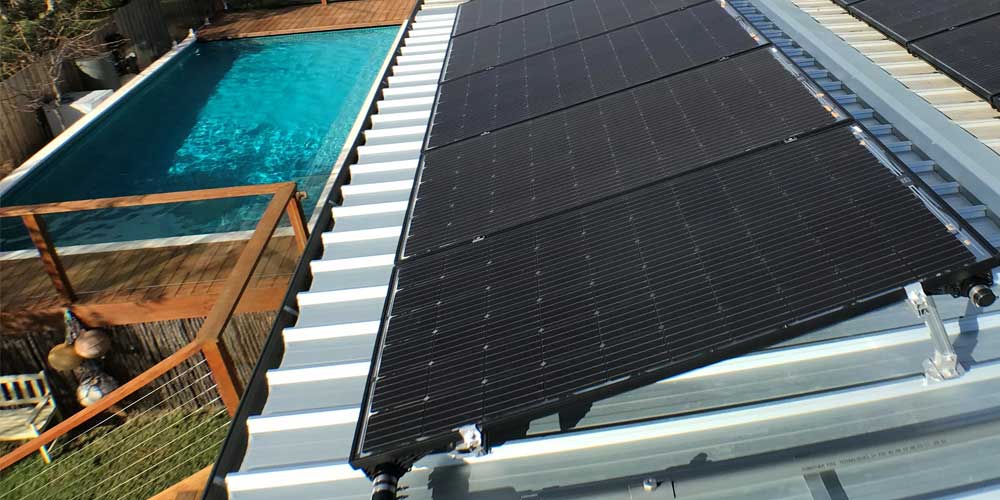
An extremely important part of getting solar pool heaters that many people forego is whether you have the optimum amount of roof space to allow for the installation of the solar heating panels.
Roof space is crucial to consider when you’re installing solar heating panels – not only because the surface area might affect the productivity of the heating panels, but the collector may also be hampered.
You will also need to strongly consider the angling of the solar panels themselves and try to position them in a way that has the least amount of loss from the size of the roof. Make sure the aspect of the panels are such that they’re least affected by adverse weather conditions.
2. Comparing Solar Pool Heater Collector Efficiency
When it comes right down to it, there are a few different solar pool heater collectors, and it may be confusing to pick among them. Some solar pool heater collectors are naturally more equipped to heat your pool quickly and more efficiently with fewer energy requirements, so you need to look out for solar pool heater collectors that are:
Equipped with a polymer material that is more predisposed to conduct thermal energy or heat: while all collectors may be made out of similar polymer materials, some of them are more efficient in conducting heat directly to the pool water.
Equipped with higher turbulence due to their tubes’ shape: what turbulence essentially does for your pool water is heat water evenly and not just at one concentrated point. It is recommended to get turbulent collector flow rather than laminal flow.
Made out of material that is not too thick: but isn’t too thin either, or it can lose out on some much-needed durability for the solar pool collector. With thin material, heat can be more easily conducted into the water directly and quickly.
Equipped with slightly larger bore tubes: since ones that are small can decrease the amount of water flow that can otherwise happen in the solar pool heater collector system.
Ensured against lower degrees of wind permeating the collector: if the rate of wind affecting the collector is higher, then the overall system can suffer some losses in the form of heat production being missed out.
More on the flatter side than other solar pool heater collectors: having a flat-faced collector not only ensures that you have less roof space to worry about, but also you can save up on energy by minimizing any loss that you would’ve otherwise incurred with curved collectors.
3. Comparing Other Collector Design Aspects
If you’ve made sure that your collector is sufficiently efficient, then there are a few other factors that you need to keep in mind before coming to a decision about one.
Ensure that your solar collector is protected against external disturbances that can hamper its functioning. There are many such things that can directly affect the thermal conductivity of your solar collector – and while you cannot remove these factors completely, you can invest in solar collectors that can withstand them all.
If you’re located in an area that gets frequent hail and frost, you can rest assured by getting a tougher polymer substance that is highly resistant to such externalities. You can also assure yourself against birds and rats by not getting a tube-type solar collector either.
You also need to sort out the logistics of your roof before you decide upon a solar collector system. As we’ve already talked about, roof space is often the deciding factor for when you’re getting a solar collector installed.
Make sure that your collector fits well and is attached to the roof in such a way that it doesn’t wear away with age or get damaged by strong winds. Additionally, once it’s in place, it should not look too out-of-place, so the overall visual effect will play quite a role here.
Make sure of the costs and maintenance requirements before investing. The collector system you decide to get should, over time, give you more returns than the initial costs, so pick accordingly.
Get a system with a higher warranty and as for maintenance, remember that your collector surface can get chalky over time and also occasionally leak. If you’re not much of a handyperson, you can attempt to get collector systems set up by yourself and do not require specialized help.
4. Comparing Solar Heating System Design Aspects
After considering the overall design functions of the collector, it is now time to talk about the components of the system itself. Make sure that you get one that is specialized according to your needs:
If you need to heat your pool during the winters as well, then you want to consider getting solar collectors that actually do so. Additionally, your system remaining frost-free is an important component that not all systems offer.
Your plumbing may affect your choice a lot. It comes at different levels of efficiencies and different costs, so it all comes down to your budget and your needs. That being said, it’s important to invest in a system that has a great pump that works noiselessly and seamlessly.
The controller’s quality also has to be kept in mind; however, if you’re going for a reputable solar collector, then you don’t have to worry too much about this one.
Lastly, the costs to run your collector system may be different for each mechanism – remember to check the inner system before investing.
5. System Plumbing Options
We have already talked about plumbing systems being integral to you coming to a decision about your solar heating collectors. But what kind of plumbing systems should you be looking out for, and is your existing plumbing system equipped to be connected seamlessly to the solar collector?
Perhaps the best option you could go for and also the easiest, the independent plumbing system does not require you to spend a fortune on getting a new plumbing system.
It’s also extremely simple to install – all that is necessary is a solar pipe that is connected directly to the solar pump and the return pipe. These two do need to be separate, which is why this is referred to as the independent plumbing system.
There are more complicated and pricey others – such as the Motorized Valve and the RetroFit – but they’re much more specialized than the independent plumbing system.
However, if you do not have the independent plumbing system installed already, then you could go for the manual system in which you can time your system to begin heating when it is warmest during the day. This plumbing system may require you to get it set up by specialists, however.
6. Solar Pool Heater Pump Sizing
It’s extremely important to consider the sizing of the solar pumps when you’re installing solar pool heaters. While this may seem like a small detail, it affects the heat output and the energy consumption almost drastically in the long run.
You’ll need to make sure that your solar pool heater pump is the exact perfect size for you to install with your solar pool heater.
If it’s too big, then electricity output may be extreme and maybe a financial hindrance. Similarly, if it’s too small, then the collector will not be able to function properly and not heat as much water as it’s supposed to. Lastly, make sure that the solar pool heater pump you’re purchasing is optimized for solar pool heating systems only.
Conclusion
That was a comprehensive and exhaustive guide on off-grid water heaters that are powered by solar. You may now be well-versed with the different systems of heating and their energy sources – and which one is the best for you and your off-grid lifestyle. If you picked solar, then you’ve opened yourself up to a world of possibilities with renewable energy.
Off-grid water heater powered by solar not only costs you significantly less than other energy sources but is more durable and environmentally friendly than most sources – and would also suit your off-grid lifestyle the best.
So gather all your takeaways from this guide and try to figure out how you’re going to introduce solar energy into heating your water sources – and especially your pool!


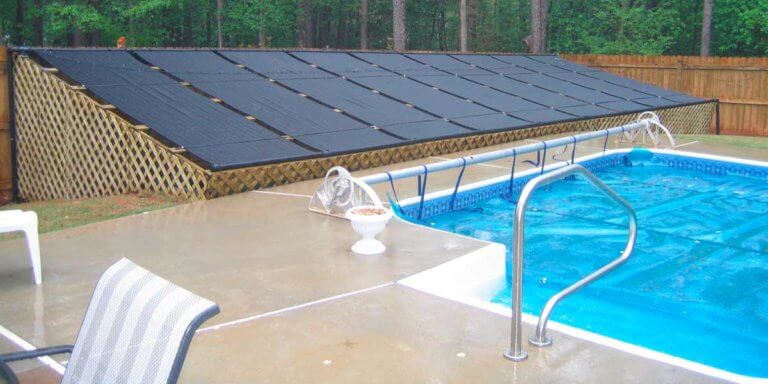
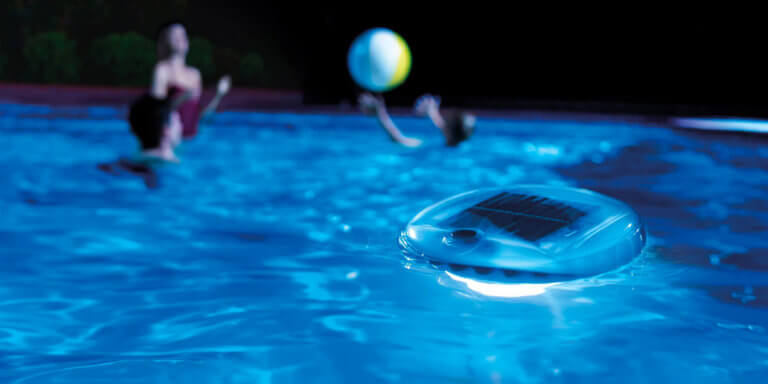
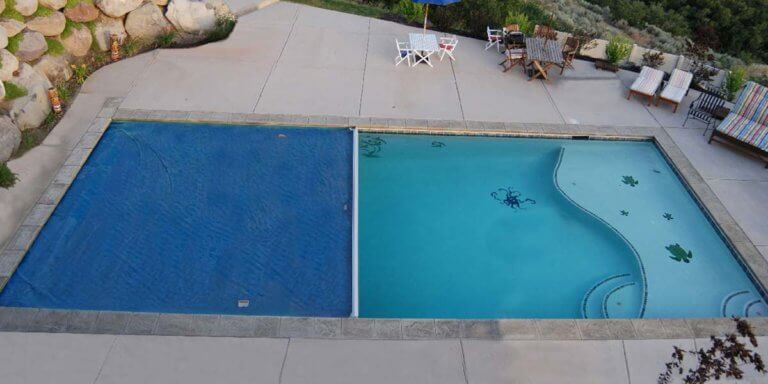
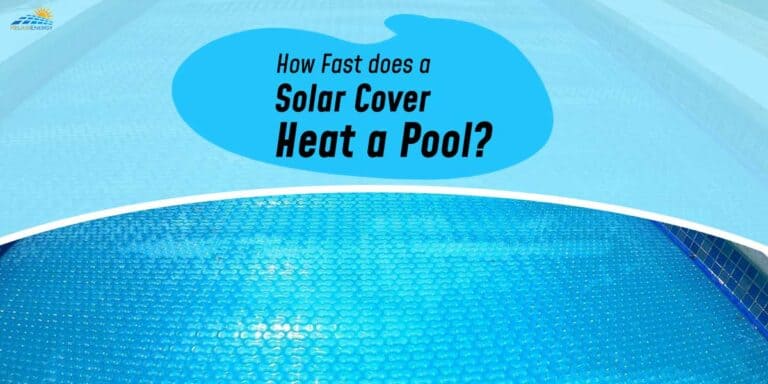
![Best Solar Rings for Pool [2023 Updated] | Reviews and Guide](https://heliushub.com/wp-content/uploads/2021/06/Best-Solar-Pool-Rings-768x384.jpg)